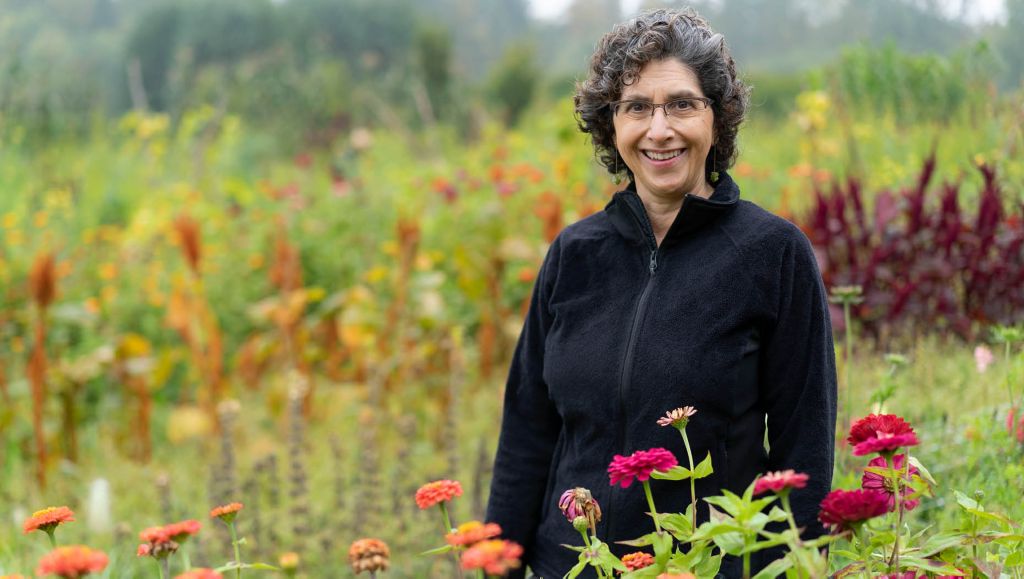Research on how to keep feeding the planet while preserving wildlife rewarded with the Volvo Environment Prize 2020


National parks and reserves have been the cornerstone of traditional nature conservation, such as the Serengeti or Kruger Park in Africa. Without these national parks, it would perhaps not be possible to see wild elephants or lions anymore. But only about 15 percent of the world's surface is protected. The lands where humans are farming, doing forestry, and ranching make up around 60 -70 percent of terrestrial Earth's surface. These lands are often managed in a way detrimental to wild plants, animals, and insects.
"With very large-scale agriculture, we are simplifying the landscapes a lot. It makes them much less hospitable for most species", says Claire Kremen, a professor in biodiversity, University of British Columbia, Vancouver, Canada.
According to a recent report by the conservation group WWF, the wildlife population has fallen by more than two-thirds in less than 50 years. They recorded an average 68 percent fall in more than 20,000 species of mammals, birds, amphibians, reptiles, and fish since 1970.
Less known perhaps is the decline of insects. Claire Kremen is an expert on wild bees and says she's concerned about insect declines.
"Insects are the little things that run the world," says Kremen, quoting famous Harvard biologist E.O. Wilson.
"Insects are at the base of the food chain for many organisms. If we didn't have pollinating insects, we'd be interfering with the reproduction of about 90 percent of plant species. And, 75 percent of the crops we humans eat benefit from insect pollinators' visits. So, we really need these creatures. I f we don't have them, we're not going to have all the fruits and vegetables that are so important for our nutrition".
Reversing the trend is still possible, she says. A way to do it is by transforming the working lands to make them more diverse, by having different crops grow within the same field, planting hedgerows, and lining the fields with shrubs and trees. It would be a mixed landscape of many crops, pastures, and small areas of native vegetation and forest borders along streams.
Critics of this type of farming and the concept of agroecological landscapes say that they are much less productive, with smaller yields in a world where the human population is approaching 8 billion people.
"I would push back on that," says Claire Kremen. "Some of our agriculture is producing food at a high cost. It produces a lot of greenhouse gases or produces nutrients that end up causing dead zones in the ocean. Sometimes the soils have been mined of their fertility, and they can't be productive in the future".
"Diversified working lands, on the other hand, can be extremely productive. Farmers could promote natural pest control by harnessing the powers of nature, thus reducing the need for pesticides. We would preserve the ability to provide clean water, to store carbon in the soils, to provide habitat for biodiversity, even to provide beautiful landscapes that people enjoy."
Says the jury of the Volvo Environment Prize Foundation:
"Professor Kremen's work on diversified farming systems and conservation has helped us to understand how the increasingly globalized food system affects biodiversity, sustainability and equity, and - most importantly - how to significantly improve this system so that we can feed ourselves while protecting biodiversity and mitigating climate change."
Claire Kremen is Professor, President's Excellence Chair In Biodiversity at the University of British Columbia, Canada. She is an ecologist and applied conservation biologist working on reconciling agricultural land use with biodiversity conservation. More information here.
For more information about the Volvo Environment Prize and this year's laureate, please contact Chairman of the Jury, Professor Will Steffen, Fenner School of Environment and Society, Australian National University, e-mail: will.steffen@anu.edu.au
Phone: +61 2 6125 4588
The Volvo Environment Prize is one of the scientific world's most respected environmental prizes. For more than 30 years, it has been awarded annually to people who have made outstanding scientific discoveries within the environment and sustainability. The award – a handmade diploma, a glass sculpture, and a cash sum of SEK 1.5 million - will be celebrated on Nov 12. with a live streaming prize ceremony and seminar.
For more information about the 2020 laureate, the Volvo Environment Prize, and how to attend the online celebrations and seminar, go to environment-prize.com.
October 13, 2020
For more information about Volvo Group, please visit volvogroup.com
The Volvo Group drives prosperity through transport and infrastructure solutions, offering trucks, buses, construction equipment, power solutions for marine and industrial applications, financing and services that increase our customers’ uptime and productivity. Founded in 1927, the Volvo Group is committed to shaping the future landscape of sustainable transport and infrastructure solutions. The Volvo Group is headquartered in Gothenburg, Sweden, employs almost 100.000 people and serves customers in more than 190 markets. In 2019, net sales amounted to about SEK 432 billion (EUR 40.5 billion). Volvo shares are listed on Nasdaq Stockholm.
